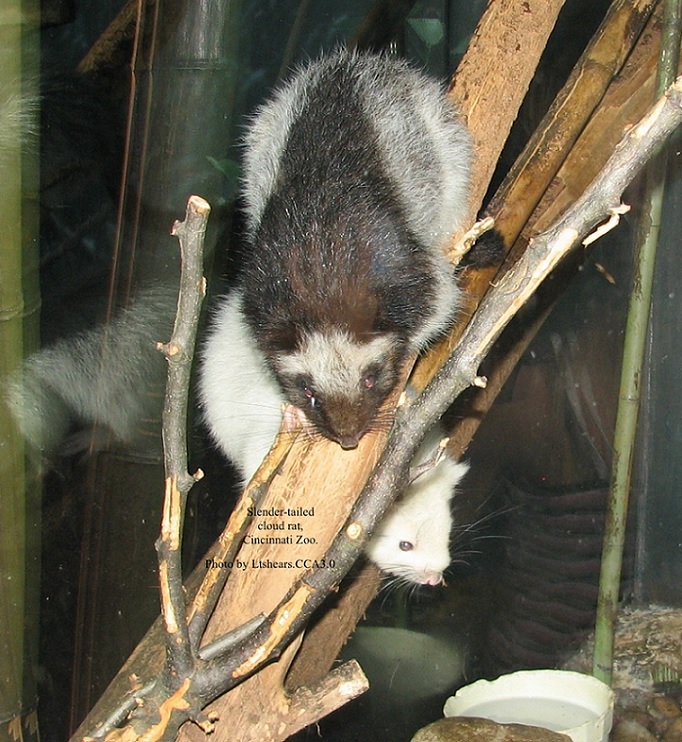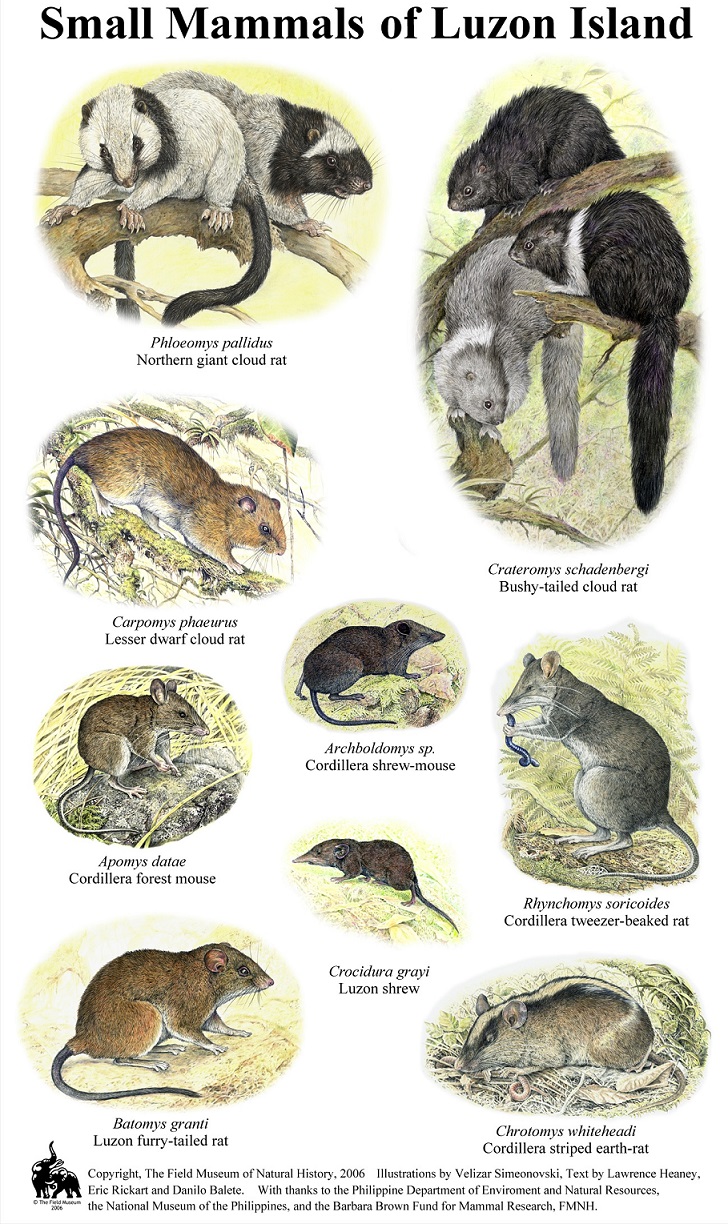
Giant bushy-tailed cloud rat (Crateromys schadenbergi). Photo by Brigitte Alliot, CCA3.0 from Wikimedia Commons.
We associate rats with filth and sewers and the carrier of leptospirosis in the country. And yet, cloud rats are fluffy and cuddly animals, and yes, they are rodents.
Extinct giant cloud rats
Three new species of extinct giant cloud rat species have been discovered in the country with two of the rodents becoming extinct only after 2,000 years ago. Its discovery has been published in the Journal of Mammalogy (23 April 2021) and its lead author Janine Ochoa, PhD of the University of the Philippines Diliman, says, “It’s crazy that in these fifty fragments, we found three new species that haven’t been recorded before.”
The three extinct species were discovered from 50 or so fossil fragments, mostly teeth and bits of bones, from the Callao Cave Complex in Peñablanca, Cagayan by a team of international scientists. It is also where Homo luzonensis, a new specie of ancient human who lived in Luzon at least 50,000 – 67,000 years ago, was discovered in 2019.
Philip Piper, a coauthor based at the Australian National University, adds that
“… these giant rodents were able to survive the profound climatic changes from the Ice Age to current humid tropics that have impacted the earth over tens of millennia. The question is what might have caused their final extinction?”
The murid family
The murids are the largest family of rodents and mammals found all over the world with over 700 species that include mice, rats, and gerbils. Of the 63 species of rats and mice in the Philippines, only six are non-native and invasive species from the Asian mainland that damage crops and property.
The Philippine murids include cloud rats (Phloemyini), earthworm mice (Chrotomyini) and forest rats and shrew-mice (Rattini).

Slender-tailed cloud rat (Phloemys pallidus), Cincinnati Zoo. Photo by Ltshears, CCA3.0 from Wikimedia Commons.
Local names: Buot, bagkon, or darauda
Cloud rats are endemic in the Philippines, and nowhere else. With 18 living species of cloud rats, Luzon alone has 12 living species, found mostly above the 1400-meter elevation, in montane and mossy forests.
Quite shy, cloud rats are big, like squirrels, with large eyes, bushy tails, and furs with striking color mix from orange, brown, grey, white, to black-and-white. Weighing from a kilo to 2.5 kilos, they live in forest canopies of higher elevation, hence their name. Herbivorous, cloud rats eat young leaves, buds, bark, acorns, bamboo shoots, seeds, and fruits. Slow breeders, they only have one young per year.
Luzon: An oceanic island
Luzon, the largest island and the most populated in the country, is entirely oceanic. It has never been connected to the Asian mainland by landbridge. Its mountain ranges include the oldest one, Central Cordillera, as well as Sierra Madre, Caraballo Mountains, and Zambales Mountains and single, isolated mountains such as Mt. Isarog, Camarines Sur and Mt. Mingan, Aurora.
They offer a canopy of elevated mountaintops called “sky islands,” or smaller areas of varied habitat in which animals further adapt into and diverge into different species.
Unique biodiversity
In 2000, a team of American and Filipino scientists led by Lawrence R. Heany, curator of mammals at The Field Museum in Chicago, started a 15-year study focused on Luzon’s non-flying small mammals, excluding bats and large mammals such as native deer and warty pig.
Of the 56 species of non-flying mammals that are known to live in Luzon, 52 live only in Luzon and nowhere else. And 28 of the 56 species were discovered on Luzon’s mountains during this project. It included four species of tiny tree mice with whiskers reaching up to its ankle and five species of earthworm-eating mice that look like shrews.
It is estimated that cloud rats arrived in Luzon about 10–14 million years ago; the earthworm mice about six to eight million years ago. Of the 28 new species, 26 or 93% are “endemic to a single subcenter of endemism on Luzon.”
Eric Rickart, a team member based at the Natural History Museum of Utah, has noted that some mountains in Luzon have five species of mammals that live nowhere else. “That’s more unique species on one mountain than live in any country in continental Europe. The concentration of unique biodiversity in the Philippines is really staggering.”
The results of their study have been published as “Doubling diversity: A cautionary tale of previously unsuspected mammalian diversity in a tropical oceanic island.” (Frontiers of Biogeography,2016).
As in the past, cloud rats are hunted for food or as pets. And with forest and habitat destruction, their existence is seriously endangered.
